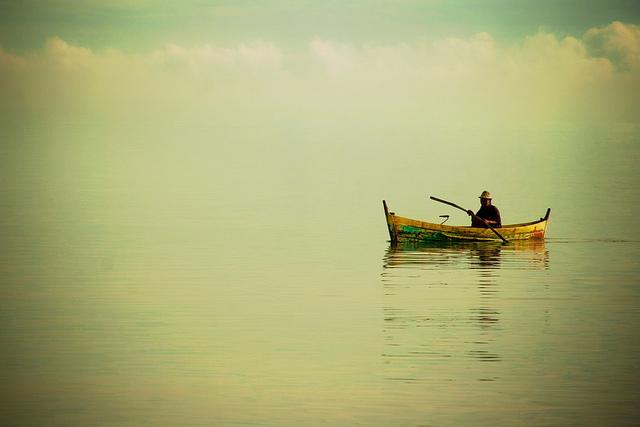Civil maritime cooperation and the South China Sea
Posted By Anthony Bergin on December 16, 2015 @ 06:00
 [1] I recently attended a fascinating ASPI forum [2] on developments in the South China Sea.
[1] I recently attended a fascinating ASPI forum [2] on developments in the South China Sea.
The forum came against the backdrop of the second round of arbitral tribunal hearings at The Hague on the Philippines’ historic case against China over the South China Sea. Any ruling by the tribunal on whether China’s nine-dash line is legitimate will have implications beyond the Philippines, especially on how other claimant countries deal with Beijing [3].
We heard a lot from four expert speakers about how the situation has recently deteriorated—caused by China’s extensive building of artificial islands and its more assertive posture—which has produced growing levels of distrust and rivalry between US and China.
We also heard several suggestions on how to deter China’s assertiveness, with discussion focused on the US Freedom of Navigation program—which law of the sea experts point out [4] was poorly executed at the Subi Reef recently.
But apart from a reference to fisheries, we didn’t hear too much on how we might use greater cooperation in the South China Sea in areas like marine scientific research [5], search and rescue, and marine environmental protection to help defuse tensions.
A few years ago ASPI convened a conference [6] on maritime confidence building measures in the South China Sea. I was a participant at the Sydney meeting. Australian and regional delegates concluded that little progress had been made on cooperation in the South China Sea. That’s despite that fact that, as several conference participants pointed out, cooperation is critical because of the volumes of shipping traffic, pressures on marine resources and environmental damage.
The Sydney meeting generally concluded that lack of trust between major powers and neighbouring countries was a key factor in explaining the lack of progress, along with concerns that cooperation might compromise sovereignty claims. The situation since the ASPI conference has only become worse.
At the same time the geography hasn’t changed; the South China Sea remains a semi-enclosed sea. To quote from the ASPI conference report [6] (PDF), cooperation is a ‘specific and joint responsibility of countries adjacent to an enclosed or semi‑enclosed sea under the regime in UNCLOS Part IX’.
Three positive initiatives have, however, recently emerged that could serve to advance maritime cooperation in the South China Sea.
First, in 2014, China and the US signed a Memorandum of Understanding [7] on Rules of Behaviour for Safety of Air and Maritime Encounters, which may over time cover coast guards.
Second, the ASEAN Foreign Ministers’ Meeting this year supported the establishment [8] of an ASEAN Coast Guard Forum to address civil maritime cooperation.
And third, the US has established a Southeast Asia Maritime Law Enforcement Initiative [9] to provide US$100 million of assistance to the coast guards and marine police of Indonesia, Malaysia, the Philippines and Vietnam to support greater regional cooperation and coordination.
Key regional forums that deal with maritime security include the expanded ASEAN maritime forum (EAMF), the ASEAN Regional Forum inter-sessional meeting on maritime security, and the maritime security expert working group under the ASEAN Defence Ministers Meeting Plus. However, none of those groups to date have really tackled maritime cooperation in the South China Sea.
But the EAMF, which includes all members of the East Asia Summit (EAS), and looks at the full spectrum of maritime issues, has now been given prominence in promoting maritime cooperation.
That’s clear when we examine the statement that came out of the EAS Summit in Kuala Lumpur on 22 November, ‘EAS Statement on Enhancing Regional Maritime Cooperation’ [10] (PDF) that Australia co-sponsored with Indonesia, New Zealand and importantly with both China and the US.
The statement specifically endorses the EAMF as an effective platform to ‘constructively engage in open and substantive dialogue’. It encourages ASEAN to consider elevating the EAMF to include a dedicated Track 1 forum in addition to the 1.5 Track EAMF ‘on the basis of consultation and consensus among EAMF participating countries’.
This important EAS document emphasises blue economy issues: it’s focused on maritime cooperation generally, not harder maritime security cooperation. When it discusses ‘incidents at sea’, for example, it looks at search and rescue incidents.
As the EAS statement on maritime cooperation reminds us, in all the talk about increasing military presence in the region and the need for ‘trip wires’ in the South China Sea, we shouldn’t forget [11] the need to focus on small ‘s’ maritime security, as opposed to harder military and political issues, as a means to reduce regional distrust.
Article printed from The Strategist: https://aspistrategist.ru
URL to article: /civil-maritime-cooperation-and-the-south-china-sea/
URLs in this post:
[1] Image: https://aspistrategist.ru/wp-content/uploads/2015/12/4612824258_fee3d506d8_z.jpg
[2] ASPI forum: https://www.aspistrategist.ru/events/panel-discussion-the-international-community-and-the-strategic-balance-in-the-south-china-sea
[3] other claimant countries deal with Beijing: https://aspistrategist.ru/after-arbitration-chinas-south-china-sea-choices/
[4] law of the sea experts point out: https://www.lawfareblog.com/cant-anybody-play-game-us-fon-operations-and-law-sea
[5] scientific research: https://www.aspistrategist.ru/publications/scientific-cooperation-in-the-south-china-sea-another-lever-for-china
[6] convened a conference: https://www.aspistrategist.ru/publications/special-report-maritime-confidence-building-measures-in-the-south-china-sea-conference/SR55_MCBM.pdf
[7] Memorandum of Understanding: http://www.defense.gov/Portals/1/Documents/pubs/NDAA%20A-P_Maritime_SecuritY_Strategy-08142015-1300-FINALFORMAT.PDF
[8] supported the establishment: http://www.asean.org/news/asean-statement-communiques/item/joint-communique-48th-asean-foreign-ministers-meeting-kuala-lumpur-malaysia-4th-august-2015
[9] established a Southeast Asia Maritime Law Enforcement Initiative: http://thediplomat.com/2015/10/us-boosting-asean-capacity-amid-south-china-sea-tensions/
[10] ‘EAS Statement on Enhancing Regional Maritime Cooperation’: http://www.asean.org/images/2015/November/10th-EAS-Outcome/EAS%20Statement%20on%20Enhancing%20Regional%20Maritime%20Cooperation%20-%20FINAL%2022%20November%202015.pdf
[11] we shouldn’t forget: https://aspistrategist.ru/which-came-first-strategic-trust-and-maritime-confidence-building-measures/
Click here to print.